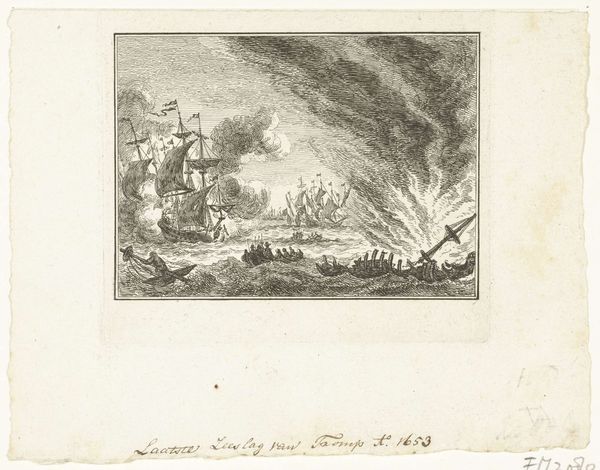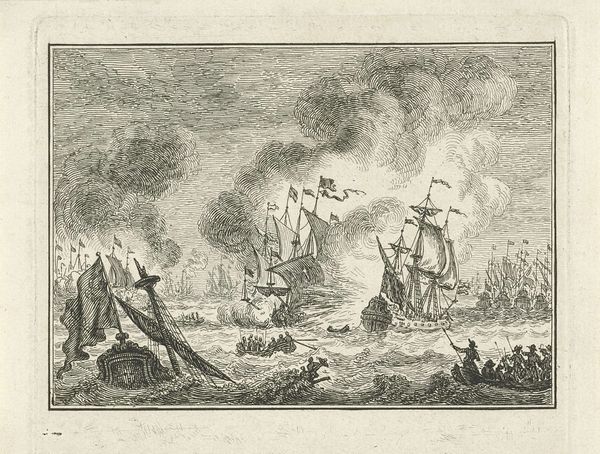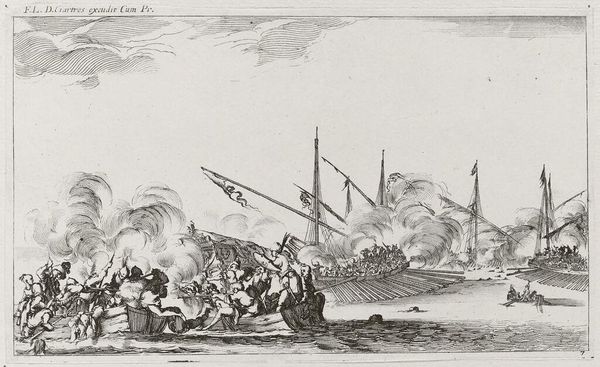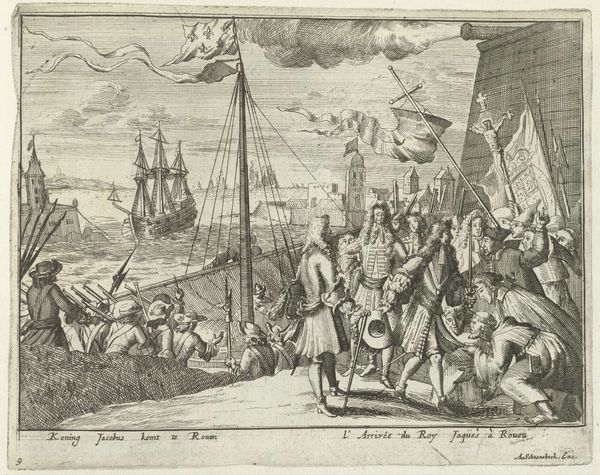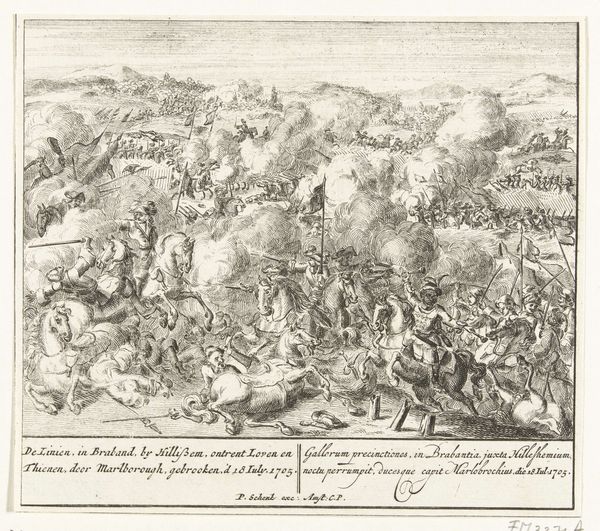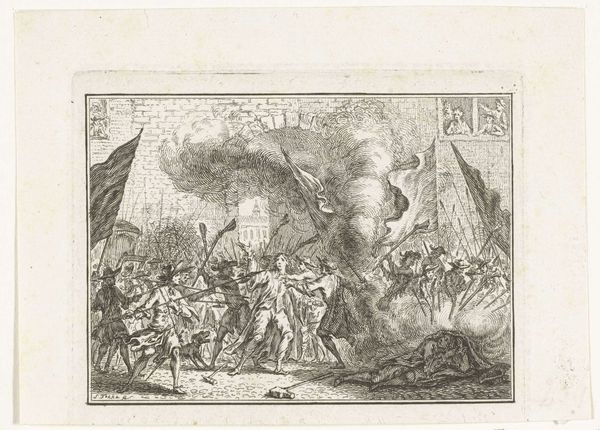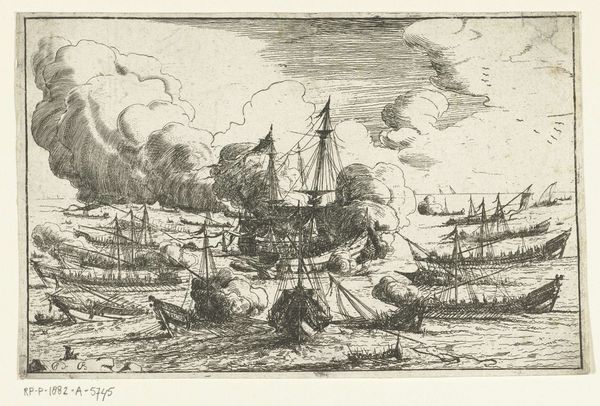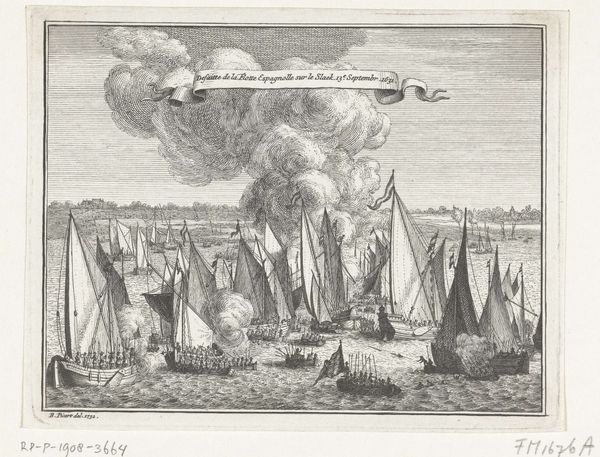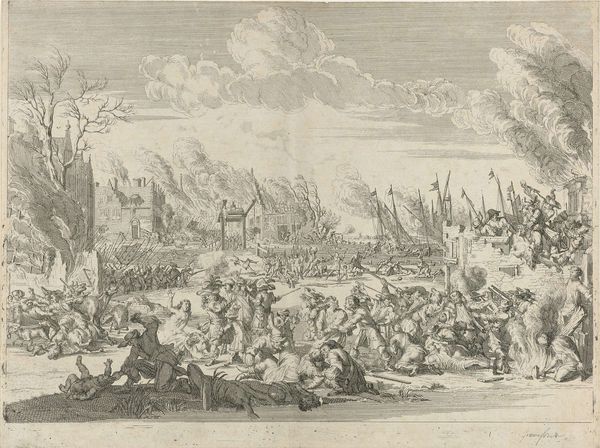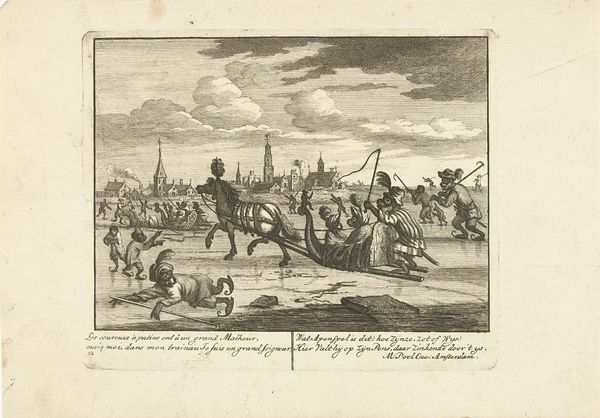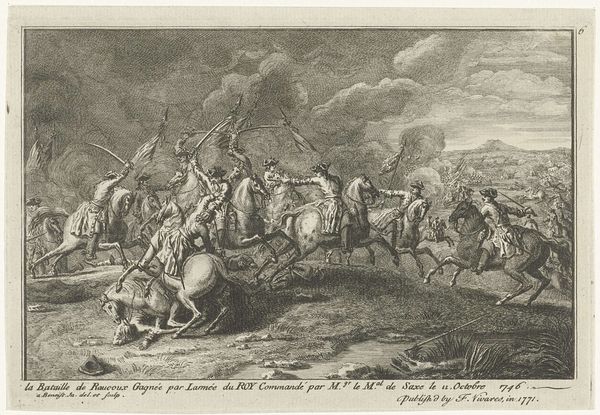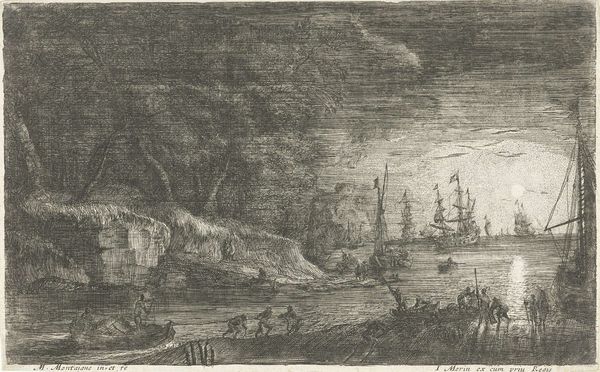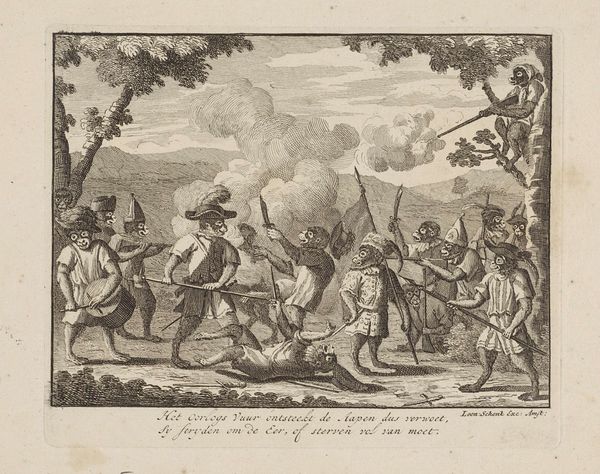
drawing, print, ink, pen, engraving
#
drawing
#
dutch-golden-age
# print
#
pen illustration
#
pen sketch
#
ink
#
pen
#
cityscape
#
history-painting
#
engraving
Dimensions: height 68 mm, width 76 mm
Copyright: Rijks Museum: Open Domain
Curator: Simon Fokke created this engraving, entitled "Inname van Den Briel, 1572," sometime between 1756 and 1758. It’s currently held in the Rijksmuseum. Editor: It has a gritty feel, a landscape of fine, etched lines. The smoke plumes billowing from the burning buildings add such drama and energy to a seemingly simple scene. Curator: Exactly. The piece depicts the capture of Brielle by the Watergeuzen, the Sea Beggars, in 1572. This event is highly symbolic in Dutch history. It represents the spark that ignited the Dutch revolt against Spanish rule. See how the artist uses the central flag as a beacon of resistance and change? Editor: Absolutely. And you know, the texture created by the engraving technique emphasizes the labor involved—not just in the historical event, dragging that heavy cannon, but also the meticulous work required to produce the print itself. Think about the engraver, Fokke, painstakingly carving each line into the plate, a real act of dedication! Curator: He's definitely drawing on established visual rhetoric. Consider the figures; even in their relatively small scale, they possess a clear dynamism. Their postures, the way they strain while moving the cannon… Fokke clearly intends for the viewer to feel the effort, to emotionally align with their struggle for liberation. Editor: And the material conditions shaped that representation, right? Engravings like these circulated widely. It became a potent medium to broadcast and shape collective memories of pivotal events. Prints were comparatively cheap, available, and the means to disseminate this imagery. Curator: And the symbolism layered within such readily available artwork reinforced a burgeoning national identity. Brielle wasn't just a city taken, but an ideal of freedom being established through this bold action. The fire could symbolize destruction but also the purification or cleansing of oppressive elements. Editor: Yes, precisely. This engraving illuminates both the historical event and the labor invested to make such imagery accessible to wider audiences. Curator: A confluence of history and hard work that solidified ideals! Editor: Agreed. It's compelling how the physical print connects the symbolic weight of the event.
Comments
No comments
Be the first to comment and join the conversation on the ultimate creative platform.
